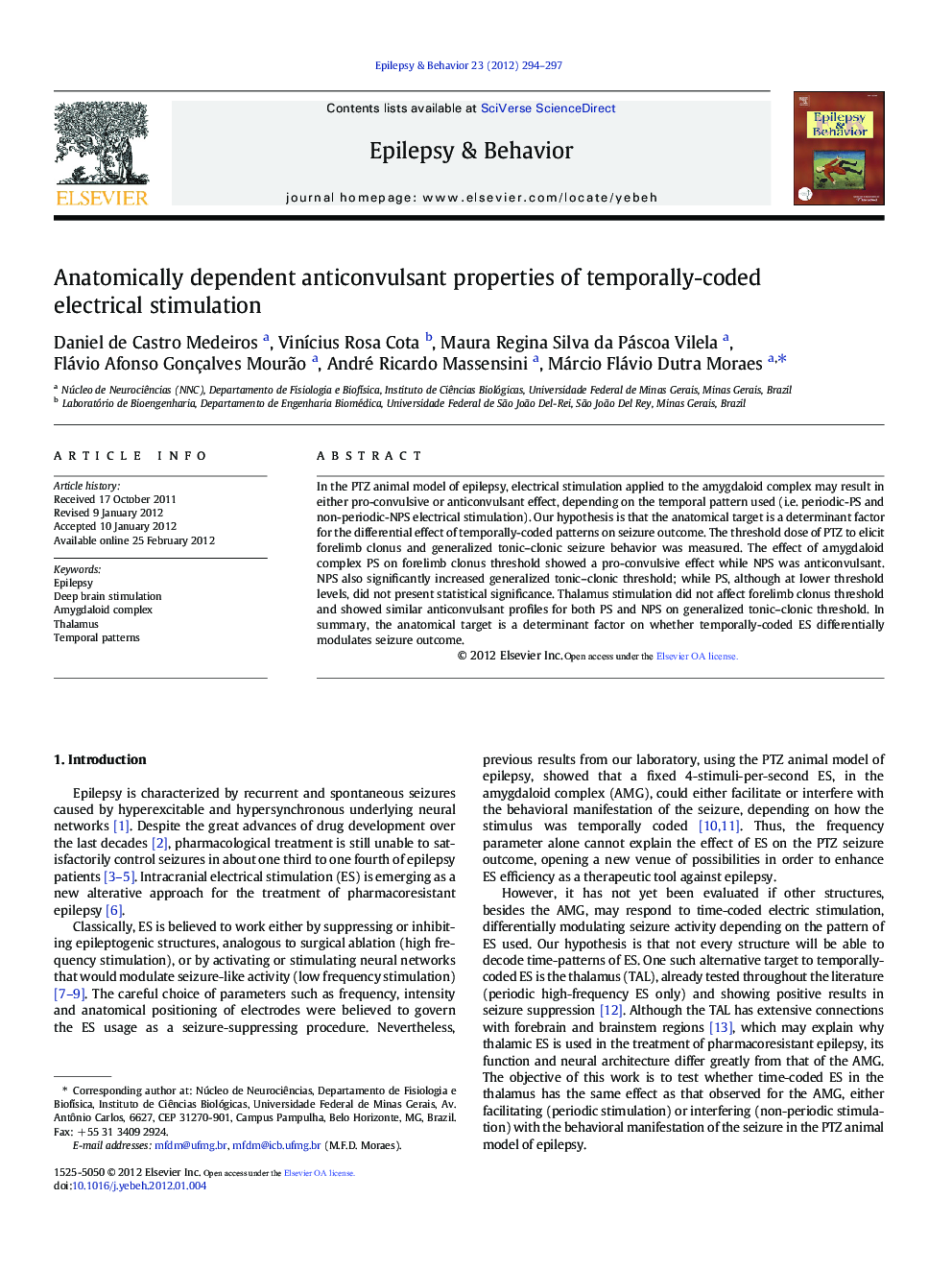| کد مقاله | کد نشریه | سال انتشار | مقاله انگلیسی | نسخه تمام متن |
|---|---|---|---|---|
| 6014575 | 1185936 | 2012 | 4 صفحه PDF | دانلود رایگان |

In the PTZ animal model of epilepsy, electrical stimulation applied to the amygdaloid complex may result in either pro-convulsive or anticonvulsant effect, depending on the temporal pattern used (i.e. periodic-PS and non-periodic-NPS electrical stimulation). Our hypothesis is that the anatomical target is a determinant factor for the differential effect of temporally-coded patterns on seizure outcome. The threshold dose of PTZ to elicit forelimb clonus and generalized tonic-clonic seizure behavior was measured. The effect of amygdaloid complex PS on forelimb clonus threshold showed a pro-convulsive effect while NPS was anticonvulsant. NPS also significantly increased generalized tonic-clonic threshold; while PS, although at lower threshold levels, did not present statistical significance. Thalamus stimulation did not affect forelimb clonus threshold and showed similar anticonvulsant profiles for both PS and NPS on generalized tonic-clonic threshold. In summary, the anatomical target is a determinant factor on whether temporally-coded ES differentially modulates seizure outcome.
⺠Periodic stimulation of the amygdala showed a pro-convulsant effect on forelimb clonus. ⺠Non-periodic stimulation applied to the amygdala was anticonvulsant for both behaviors. ⺠Thalamus time-coded stimulation did not affect forelimb clonus threshold. ⺠Both types of stimulation of the thalamus increased generalized tonic-clonic seizure threshold.
Journal: Epilepsy & Behavior - Volume 23, Issue 3, March 2012, Pages 294-297